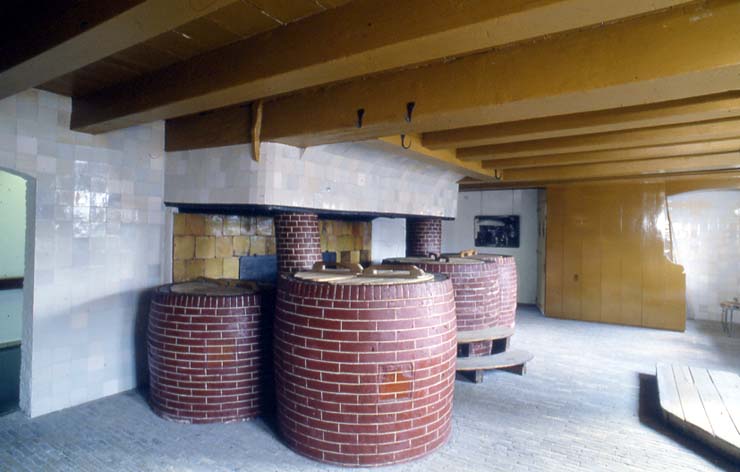|
Oude Mannenhuis
An Oudemannenhuis, or ''Old Men's house'' is a Dutch term for a home for poor men older than sixty, who could spend their final days enjoying regular meals and a clean place to sleep. It can be regarded as an early type of retirement home, which lasted up to the 19th century. As an institution, they were an improvement over almshouses for the elderly poor known as hofjes. Because older men were generally less able to care for themselves than women, the city councils of the Netherlands built special purpose houses. After the introduction of ''Oudemannenhuizen'', the hofjes were designed almost exclusively for women, because women could organize themselves more efficiently. For women who became too feeble to take part in hofje life, special "old houses" for woman were opened, that were often combined with old men's houses. Like the hofjes, living in an old man's house was usually free of charge and was considered a favor. Similar to hofjes, the regents of old men's houses had a rege ... [...More Info...] [...Related Items...] OR: [Wikipedia] [Google] [Baidu] |
Amstelhof 5
The Amstelhof ( en, Amstel court), was a retirement home that is the Hermitage Amsterdam museum. It was built near the Amstel river in 1682 by the diaconate of the Dutch Reformed Church after having received an inheritance of the rich merchant Barent Helleman. He died on 18 October 1680 and left approximately 90,000 guilders to the church. The city of Amsterdam donated the land on which it was built. Design The building was designed by city architect Hans van Petersom. It has a classical style facade on the Amstel with a length 102 m, at the time the longest facade of Amsterdam. It has a symmetric map with a large courtyard. Around two secondary courtyard lie wings with rooms for the ladies: the ''chambrettes''. The centrally located monumental entrance leads to a fake door. The mayors at the time found an entrance with steps a necessity for a building of such stature. Directly behind the door is the church hall, which could not serve as entrance. Above the door the origi ... [...More Info...] [...Related Items...] OR: [Wikipedia] [Google] [Baidu] |
Hofje
{{inline refs needed, date=May 2012 A hofje (diminutive of 'hof', 'court') is a Dutch word for a courtyard with almshouses around it. Hofjes have existed since the Middle Ages. A hofje provided housing for elderly people (mostly women). They were privately funded, and served as a form of social security. In the Netherlands there are still a number of hofjes in use. Hofjes are usually built in a U-shape with a yard or garden in the middle, and a gate as entrance. The shape of hofjes was most likely inspired by the (older) Begijnenhofjes—groups of small houses inhabited exclusively by religious women. A distinction is usually made between the Begijnenhofjes and 'regular' hofjes. The former were used only by (Catholic) women, who were supporting themselves. They were a kind of cloister. The latter were more charitable institutions. To be eligible to live in a hofje one had to meet four criteria: * Sex: almost all hofjes were founded for women, as they could be relied o ... [...More Info...] [...Related Items...] OR: [Wikipedia] [Google] [Baidu] |
Proveniershuis
The Proveniershuis is a hofje and former schutterij on the Grote Houtstraat in Haarlem, Netherlands. The complex of buildings surrounds a rectangular garden taking up a city block that is on the Haarlem hofje route. Unlike hofjes that were meant for poor elderly women, the homes around this courtyard are much larger, and the garden itself is about twice the normal size. The reason is that these inhabitants were men who actually paid rent to live there, as opposed to hofje inhabitants who had no income to spend on rent. Most hofjes were for women, because they were able to run their own modest household, usually as a member of a "hofje team" in various responsible roles. Men were generally less able to take care of themselves and were thus dependent on the "preuves" in the form of simple meals and services that were paid for from rents. History This home for Haarlem ''proveniers'' was founded in 1707 by the city council to house elderly men. The main buildings are much older than ... [...More Info...] [...Related Items...] OR: [Wikipedia] [Google] [Baidu] |
Social History Of The Netherlands
Social organisms, including human(s), live collectively in interacting populations. This interaction is considered social whether they are aware of it or not, and whether the exchange is voluntary or not. Etymology The word "social" derives from the Latin word ''socii'' ("allies"). It is particularly derived from the Italian ''Socii'' states, historical allies of the Roman Republic (although they rebelled against Rome in the Social War of 91–87 BC). Social theorists In the view of Karl MarxMorrison, Ken. ''Marx, Durkheim, Weber. Formations of modern social thought'', human beings are intrinsically, necessarily and by definition social beings who, beyond being "gregarious creatures", cannot survive and meet their needs other than through social co-operation and association. Their social characteristics are therefore to a large extent an objectively given fact, stamped on them from birth and affirmed by socialization processes; and, according to Marx, in producing and reproducin ... [...More Info...] [...Related Items...] OR: [Wikipedia] [Google] [Baidu] |


